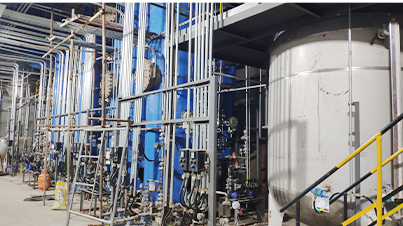Polyaluminium Chloride Applications for Potable Water Treatment and Purification Processes
Poly Aluminium Chloride for Drinking Water An Overview
Poly Aluminium Chloride (PAC) is an inorganic polymer compound that has gained prominence in the field of water treatment, particularly for its effectiveness in purifying drinking water. As global water quality concerns continue to rise due to pollution, industrial discharges, and an ever-increasing population, the need for efficient and safe drinking water treatment methods has become paramount. PAC has emerged as a versatile coagulant that plays a vital role in this process.
Understanding Poly Aluminium Chloride
PAC is a highly efficient coagulant that is formed by the hydrolysis of aluminium chloride in the presence of water. It is typically available in powdered or liquid form, making it user-friendly for various applications. The primary mechanism by which PAC functions is through its charge neutralization and bridging effects, which help to agglomerate suspended particles and impurities in water, thereby facilitating their removal.
One of the key advantages of PAC over traditional coagulants, such as alum, lies in its lower dosage requirement. This efficiency not only makes the treatment process more cost-effective but also results in lower residual aluminium levels in treated water. Moreover, PAC can perform well across a wide range of pH levels, further enhancing its suitability for different water types.
Application in Drinking Water Treatment
In the drinking water treatment process, PAC is often employed in the coagulation-flocculation stage. Initially, raw water containing colloidal particles, organic matter, and turbidity is treated with PAC. The positively charged PAC ions neutralize the negative charges on the suspended particles, allowing them to come together and form larger flocs. These flocs can then be easily removed from the water through sedimentation or filtration.
poly aluminium chloride for drinking water

The use of PAC also contributes to the reduction of turbidity, color, and organic content in drinking water. This is particularly significant as many water sources are affected by agricultural runoff, industrial pollution, and natural organic matter. By effectively clarifying the water, PAC not only improves aesthetic qualities but also ensures that the water meets safety standards for human consumption.
Environmental and Health Benefits
Apart from its efficacy in water purification, PAC has been recognized for its environmental and health benefits. Compared to some other coagulants, PAC is associated with lower levels of harmful by-products. This makes it a safer alternative for drinking water treatment, reducing the risk of exposure to potential health hazards. Additionally, the lower chemical usage translates to decreased sludge generation, lessening the environmental burden associated with wastewater treatment processes.
Conclusion
As the world's demand for clean and safe drinking water intensifies, Poly Aluminium Chloride stands out as a reliable and efficient solution in the water treatment industry. Its effectiveness, cost-efficiency, and environmental sustainability make it an attractive choice for municipalities and water treatment facilities. As ongoing research continues to evaluate and enhance its applications, PAC is likely to play a crucial role in addressing global water quality challenges, ensuring that communities have access to safe and potable drinking water for years to come.
In summary, the integration of PAC in water treatment processes not only streamlines operations but also secures a healthier future for populations relying on safe drinking water. As water scarcity becomes a growing concern, innovations like PAC will be pivotal in crafting sustainable solutions and safeguarding water resources.
-
Water Treatment with Flocculant Water TreatmentNewsJun.12,2025
-
Polymaleic AnhydrideNewsJun.12,2025
-
Polyaspartic AcidNewsJun.12,2025
-
Enhance Industrial Processes with IsothiazolinonesNewsJun.12,2025
-
Enhance Industrial Processes with PBTCA SolutionsNewsJun.12,2025
-
Dodecyldimethylbenzylammonium Chloride SolutionsNewsJun.12,2025





